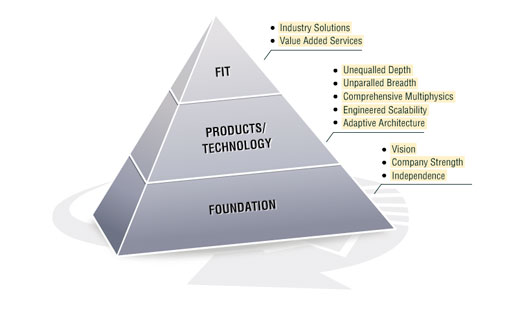Ian Dabney of ANSYS looks at how, in tough economic times, simulation is crucial for innovation.
It is generally assumed that in times of financial uncertainty, innovation is one of the first areas to cease. However, despite a brutal recession and restricted access to funds, businesses continue to innovate and develop new products in order to protect and grow market share. In fact, research suggests that the recovery so far has been a result of manufacturers' investment in innovation.

In its most recent Innovation Monitor report, UK manufacturing organisation, the EEF, found that "more manufacturers are innovating on a broader scale" and "investments in innovation are driven by a consistent focus on the customer."
Over 70% of manufacturing firms cite the need to satisfy existing customers as the main driver of innovation. Clearly it is easier to make innovation pay if you know there is a customer ready and waiting for the output. And a recent report from Aberdeen Group reinforces this sentiment, highlighting that typically, the greatest customer need is for lower cost products that do not sacrifice quality, or demand for products to be developed and delivered quicker.
However the EEF Innovation Monitor also found that for the third year running, most firms struggle to turn innovative ideas into clear market advantages, as they face technical hurdles which cause innovation to come in over budget and to overshoot deadlines.
So in an economy where cost control continues to dominate, and the threat from emerging markets is increasing, how should UK manufacturers approach the need to innovate?
It is imperative that all innovation from the design and prototype testing to the production line and point of sale, is as cost-effective as possible, aligned closely to the specific opportunity it is designed to exploit, and can be completed quickly.
The issue of speed, particularly time to market, is the most common barrier to success. Innovation that cannot be achieved in time to meet its objectives whether that is new product launches, new market exploitation or just new demands from an existing customer risks becoming nothing but an expensive distraction.
However optimising innovation to meet objectives in a cost efficient way is not easy. In developing new products, it is often impossible to develop physical prototypes, alter materials for different iterations of product development or modify physical production processes, without significant detrimental impact on day to day operations and the bottom line.
The Rising Role of Simulation
Because of this business conflict, alterations are often too late and too costly. Aberdeen Group found that the number one design challenge was that problems and errors with new product development were discovered too late. Similarly the EEF found that almost 60% of manufacturers found overcoming technical issues such as design remained the most prevalent barrier to successful innovation.
When one considers the incredible complexity of some product designs, which can incorporate various forms of analysis and hundreds of sub-processes, these costs can become prohibitively high. Costs arise from scrapping the existing work done, reworking the prototype with additional production, expensive, skilled labour and specialist materials.
Best practice is to embed simulation at the earliest possible point in the design process and systematically re-assess and re-simulate at regular points to get the physical prototype right first time.
By creating virtual and digital prototypes and then simulating the likely changes, organisations can eliminate the costs of the actual physical change and better understand the impact of individual changes on other parameters of the product. Put simply, they can innovate from a far more competitive cost base. In the words of the EEF: "Making innovation a more predictable and successful process can help boost returns."
According to Aberdeen Group, best in class organisations are 71% more likely to use this approach to evaluate products throughout the design phase and 64% more likely to evaluate different materials to optimise the product.
The earlier in the design process that changes can be made, the less cost and disruption they will incur. This is critical in keeping innovation on time and to budget.
Aberdeen Group also highlights that when it comes to product design, the top two strategies of best in class organisations include early analysis of product behavior, and the implementation of a "get it right first time" strategy.
Not only do these approaches ensure that a focus on cost containment can be maintained, but any new parameters can be fed in at appropriate milestones to ensure that new products are still aligned with customer needs. Customer demands can change drastically while you are developing the product, and being equipped with the agility to respond quickly to these demands, is crucial.
Another feature of this best practice is the ability to track those iterations that are deemed failures by the simulations. Understanding why a particular iteration does not work is a critical part of evolving a world class innovation and development facility. It also creates a library of iterations to reduce future development costs and timeframes.
The rationale for the use of simulation is simple to get the new product or process right first time at the point of launch or roll out, as cost effectively and customer-centrically as possible. The right first time finish line is now the only line to cross, and simulation is vital to keep innovative businesses at the front of the pack.

Add a Comment
No messages on this article yet